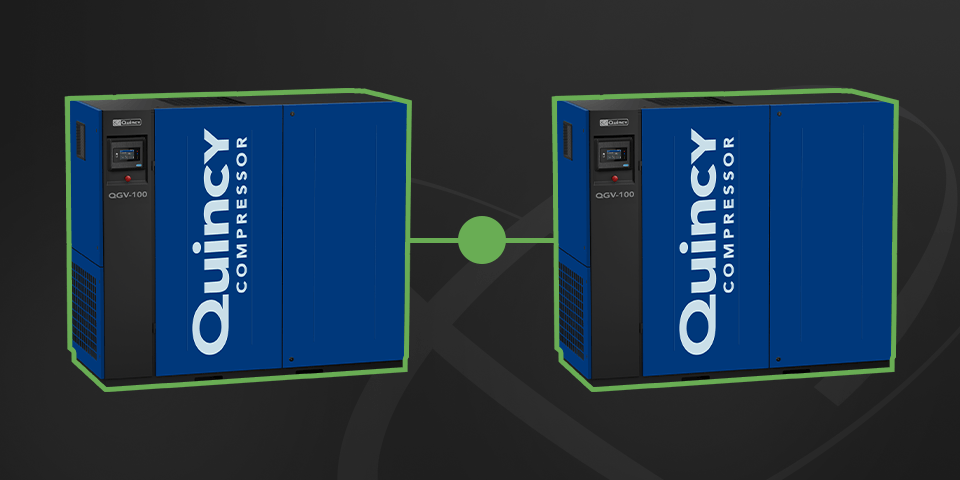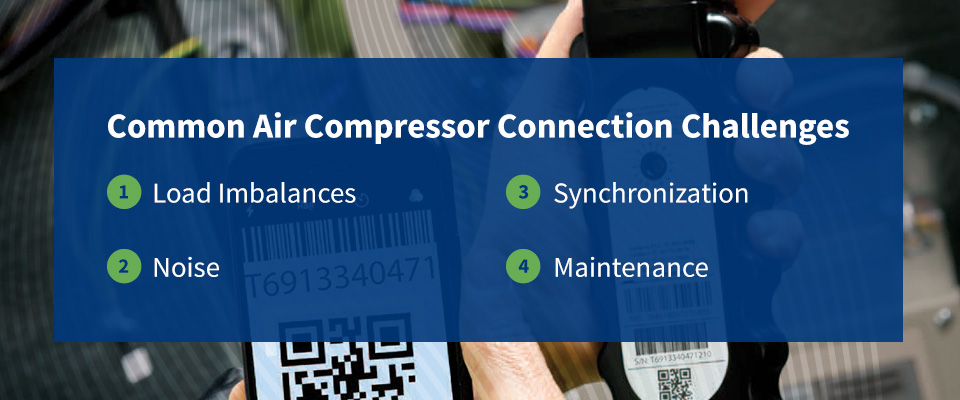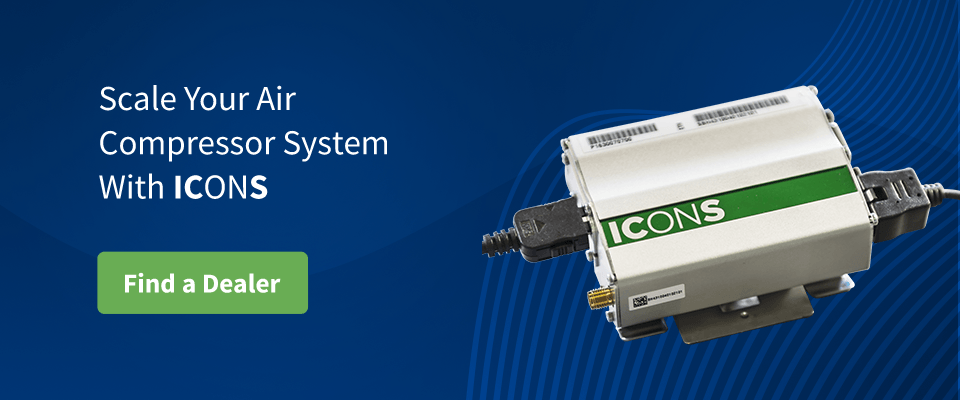
Pairing compressors in your compressed air system can solve various challenges, from inadequate air supply to uninterrupted airflow. Connecting two air compressor tanks can help you maximize your operation, doubling your air supply for elevated product efficiency.
Can You Connect Two Air Compressors Together?
The short answer is yes, you can connect two air compressors. However, you must follow the process to stay safe and achieve your desired results. The first step is understanding air compressor basics.
How Air Compressors Work
Two categories of air compressors convert power into potential energy stored in pressurized air.
- Reciprocating air compressors: This air compressor uses pistons to compress air.
- Rotary screw air compressors: Instead of pistons, this type of air compressor uses screws to compress air.
Cubic feet per minute measures the volume of air a compressor can deliver at a specific pressure. The compressor’s pressure rating is also essential to a successful connection, indicating the maximum pressure your machine can generate.
Determining whether CFM ratings and capacities are compatible is crucial when combining two air compressors. Incompatible capacities and CFM ratings can cause potential damage and impact performance.
When Is Combining Two Air Compressors a Good Decision?
Uptime and efficiency are primary considerations in many air compressor applications. Depending on your circumstances, pairing air compressors can help you achieve these goals. Here are some common reasons to connect two compatible air compressors.
- Increasing air supply: Connecting two air compressors combines their capacities. Increasing the volume of available compressed air can be helpful if a single compressor does not provide sufficient airflow for your application.
- Supplying uninterrupted air flow: When you join compressors in parallel, one can kick in when the other reaches its capacity limits. This continuous airflow is essential for applications requiring a constant air supply.
- Improving load balancing: Connecting air compressors allows you to distribute your workload between them, which prevents overloading one machine, enhancing efficiency and equipment longevity.
- Enhancing flexibility: If you use air compressors for different tasks and applications, connecting two gives you the flexibility to adjust accordingly, boosting uptime and providing optimal performance.
- Providing redundancy: Combining two air compressors means that if one malfunctions, the other continues providing compressed air, minimizing downtime.
Steps for Connecting Two Air Compressors
Though connecting your compressors is relatively simple, you’ll need time to prepare. Once connected correctly, your compressors will work together to increase pressure throughout your compressed air system. The following steps will help you complete the process from start to finish.
Prepare for Connection
Before connecting your compressors, ensure you have the tools and accessories you need and enough clean, dry space to run them both. Here are some components you’ll need.
- T-fitting: Your T-fitting connects your two compressors, allowing airflow from one to the other.
- Check valves: One-way valves prevent backflow between the two compressors.
- Regulator: A regulator controls the pressure in the system.
- Pressure gauge: This gauge connects to the regulator to monitor system pressure.
- Pressure switches: These control compressor operations, turning your compressors on and off based on the system pressure.
- Unloader valve: This component releases compressed air from the system when you power down your compressor, preventing it from starting under load.
- Air manifold: The air manifold distributes the compressed air to the necessary tools and equipment.
- Airline: Your airline connects your system components. Choose one constructed from high-quality material to maintain air pressure and avoid leaks.
- Outlet: The outlet lets compressed air out of the system. Connect it to your regulator to control the air pressure.
Connect Your Compressors
Start by confirming connections for all the above components and ensuring they function correctly. Pinpoint and address any issues when connecting your two compressors. Then, take the following steps:
- Ensure both compressors have the same phase and voltage.
- Install a check valve on each compressor’s discharge line to prevent backflow and ensure the air cannot flow across from one compressor to the other if there’s a breakdown and one isn’t working.
- Attach the T-fitting to the outlet of one compressor.
- Connect the other compressor to the remaining opening of the T-fitting.
- Use your extra piping to create a unified output for both compressors.
- Install a pressure switch on both compressors and connect them in parallel.
Your T-fitting will have a third connection where you can install a hose to connect to your desired air tools. Where possible, use quick-connect fittings to maintain your system’s versatility. Your air compressors should have the same setting on both pressure switches to bear the load equally.
Common Air Compressor Connection Challenges
Troubleshooting is critical when connecting two air compressors. Some issues are more likely in the early stages, and knowing how to solve them boosts your uptime. Consider these obstacles and some quick solutions.
Load Imbalances
Load imbalances are a typical problem when connecting compressors of different capacities. When one compressor bears the brunt of the load, it leads to premature wear and tear. Use a load-sharing controller to distribute the load between the two compressors.
Noise
When you double the number of compressors, there’s a good chance you also compound the noise, which can be challenging if you’re working in a contained environment. Consider investing in soundproof materials or installing your compressors in a separate space.
Synchronization
Connected compressors must be in sync to prevent issues like surges and pressure drops. Consider adding a synchronizing controller to keep both machines working together.
Maintenance
Connecting two compressors can lead to maintenance challenges. Adopt a preventive maintenance strategy to prevent unnecessary issues and the associated downtime.
Scale Your Air Compressor System With ICONS From Quincy Compressor
You’ll inevitably need more air compressors to meet your business needs as your operation grows. When expanding your inventory, you must rely on insights to ensure maximum uptime and efficiency throughout your operations. Whether you have two connected air compressors or multiple models in different locations, Quincy offers 24/7 predictive maintenance through ICONS cellular connectivity.
ICONS is a data monitoring program that lets you evaluate all your air compressors from a single, user-friendly interface. Take a proactive approach to maintaining air compressor efficiency and longevity with ICONS, our fully customizable solution for all your monitoring needs. Contact us to learn more about how our solutions can streamline your operations today.



